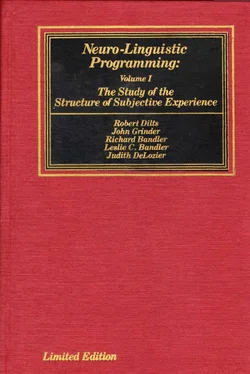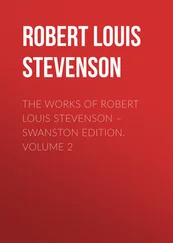In most educational institutions, children are not yet taught the formal aspects of task–specific learning when they are learning to spell — they are simply given gross feedback for whether they have spelled "correctly" or "incorrectly." The children are left on their own to come up with a strategy (of which those previously described are only two of a large number of possible permutations)
which may or may not be the most effective for the task of spelling. [11] 6. In other words the children are given a task — "Learn these ten words for the spelling test on Friday" — without being taught specific techniques to accomplish that task. Regardless of this, the "corrected" tests are returned on Monday with the usual attendant rewards and punishments for success and failure.
They are not taught strategies, but rather simply content.
What we hope to accomplish by making such formal strategies explicit through the neurolinguistic programming model is to increase the effectiveness of education in all disciplines. Many types of outcomes, to be achieved effectively and efficiently, involve the utilization of specific representational systems in specific sequences. Others are more flexible with respect to which representational systems occupy which nodes in the TOTE sequence. By using the elicitation and design techniques of NLP these distinctions may be made explicitly available.
The goal of TOTE and representational systems analysis is twofold:
a) To find the most appropriate representational systems for the TOTE steps that lead to a particular outcome (such as using the visual representational system for spelling).
b) To be able to use all representational systems as resources for learning and performing. This means that in cases where more than one representational system may be used for a particular step in a task (such as testing the nail in the hammering example), that one may choose to substitute another representational strategy should it be appropriate or necessary for the context. This serves to greatly expand one's flexibility and repertoire of choices requisite variety.
2.4 Modifying TOTE Notation for Strategies.
The TOTE is the basic unit used to identify a particular sequence of behavior. A strategy is the basic unit of analysis of a particular TOTE, or set of TOTEs. Strategy analysis breaks a TOTE down into its representational components and describes the order of the particular representational activity that leads to the specific behavioral outcome.
We have found TOTE diagrams to be somewhat laborious and impractical as a notational format for strategies. Moreover, it is often inefficient and sometimes arbitrary to try to identify the specific function, within the framework provided by the TOTE, of each step in a sequence of behavior. As we mentioned earlier the test phase of one TOTE may be part of the operation phase of another TOTE. Making this functional distinction is sometimes just a matter of how you punctuate the sequence; that is, it depends on where you choose to start analyzing the sequence, and which representations you decide to put where in the TOTE framework. Spending too much time on such issues when you are communicating with an individual or group can be counterproductive.
In neurolinguistic programming we have chosen to streamline this TOTE framework into a linear string of representations that we call a "strategy." The two most important aspects of a strategy are:
a) The representational system in which information is coded.
b) The sequential relationship between representations.
With the strategy, of course, we will presuppose the underlying TOTE framework: every strategy will be assumed to perform some tests on the input experience of the individual and to contain an operate point and an exit point. Some strategies, though, will be complex and lengthy, incorporating many strings of TOTEs. The functional significance of each individual step (that is, whether it is a representation involved in a test, operation, indicating an incongruence, both a test and an operation, etc.) will not always be specifically identified unless, of course, it is important for securing the outcome. And even though we will be primarily using linear notation for strategies, we will feel free to employ the TOTE diagram when it is useful to illustrate important aspects of some behavioral sequence.
Thus, we could notate the diagram of the visual spelling TOTE shown in figure A as:

This shows that the individual inputs auditorily, by listening to the word presented (the "e,i" superscript indicates that this input may come from either external or internal sources—this may also be indicated by putting no superscript above the A, showing that it is not specified whether the auditory stimulus comes from internal or external sources). The individual next constructs a visual image from the auditory input (V i c) and tests it against some remembered image (V i c/ V i r). If the internal feeling (K i) the individual derives from the test is negative (-) the individual loops back to the beginning of the strategy and processes the word again; if the internal feeling is positive ( + ) the individual exits.
Depending on what one intends with the strategy, notation can be streamlined even more, simply showing the basic representational progression:

This indicates that, for spelling, the individual begins auditorily (whether the stimulus comes from external or internal sources is unspecified), derives an internal image from the sound, and from the image derives a feeling which will either send the strategy back through the loop or allow it to exit.
Both diagrams above carry most of the information shown in the TOTE diagram. Each demonstrates strategy analysis at a different level of detail. It will be up to the programmer to choose which level of detail will be the most appropriate for achieving the outcomes desired within the particular context with which s/he is dealing. In general, the programmer will choose the most elegant level of detail — that is, the one that employs the fewest number of distinctions and is still capable of eliciting all the outcomes desired in that situation. This will, of course, be dependent on the types of outcomes involved. We will expand on the issues and aspects of strategy notation further in the Elicitation Section of this book.
2.5 The Implications of Strategies.
One way to talk about strategies is to suggest that they are, in many ways, like using a telephone. Representational systems (both of internal and external orientation) are like the digits on the telephone keyboard. The way we sequence and order the activity of these representational systems leads us to different outcomes, just as the use of different combinations of numbers on the phone will get us different localities and people.
A telephone number, like a strategy, is a means to access resources. One must, of course, select the appropriate number to reach the appropriate resource. If we want to call an ambulance, find out about repairing a car, order musical equipment or make reservations for dinner, we must know which numbers to use. Changing or mixing up one digit leads to an entirely different outcome. Some places have more than one telephone number, and it will be possible to dial several different sequences to reach them. Others will have one number and one number only.

To contact the appropriate party long distance, it is necessary to prefix the number we are attempting to reach with an area code sequence of digits. So it is with strategies — every step in the strategy, and the eventual outcome, is dependent on the steps that have come before. In certain contexts individuals and groups may need to prefix their operations or strategies with other actions or representations as a necessary preparation toward securing the outcome they desire or need. If they do not test for certain important conditions in the beginning of the strategy before they have initiated some later operation they may run up against interference or blocks to achieving their outcome that could have been more easily dealt with earlier in the sequence. Some people and organizations get stuck in strategies similar to that of an individual who keeps punching only the last four digits of a seven–digit phone number and wonders why he keeps ending up with only the dial tone. Others may needlessly and inefficiently overprepare like the individual who uses the area code for telephone numbers in his own locality.
Читать дальше














